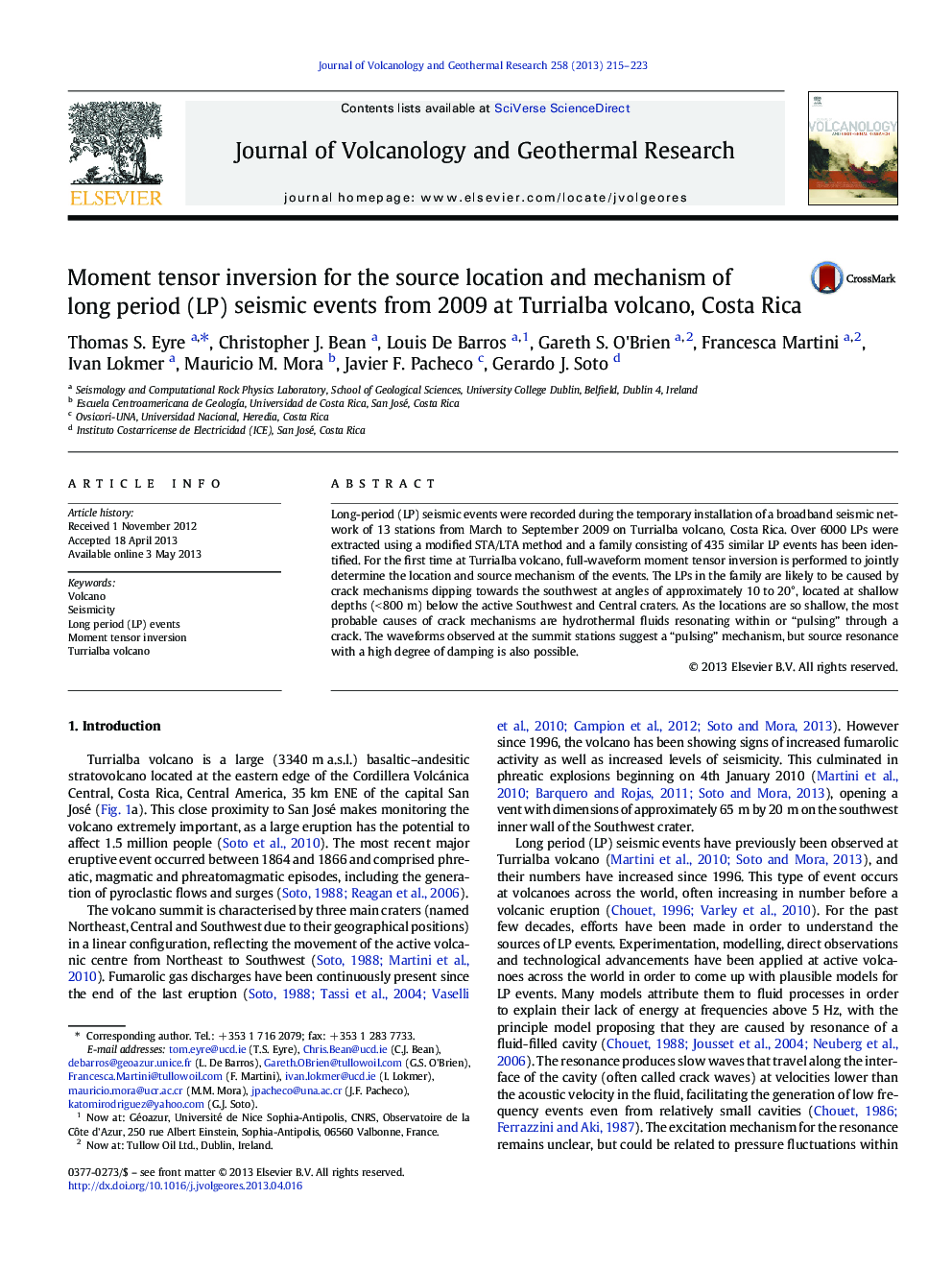| Article ID | Journal | Published Year | Pages | File Type |
|---|---|---|---|---|
| 4713162 | Journal of Volcanology and Geothermal Research | 2013 | 9 Pages |
•Long period (LP) events have been recorded in 2009 at Turrialba volcano, Costa Rica.•For the first time at Turrialba volcano, these events have been analysed in detail.•LPs were correlated into 5 closely related families that evolve over time.•Source locations are at shallow depths (< 800 m) below the active craters.•A crack mechanism dipping shallowly to the southwest produces the LPs.
Long-period (LP) seismic events were recorded during the temporary installation of a broadband seismic network of 13 stations from March to September 2009 on Turrialba volcano, Costa Rica. Over 6000 LPs were extracted using a modified STA/LTA method and a family consisting of 435 similar LP events has been identified. For the first time at Turrialba volcano, full-waveform moment tensor inversion is performed to jointly determine the location and source mechanism of the events. The LPs in the family are likely to be caused by crack mechanisms dipping towards the southwest at angles of approximately 10 to 20°, located at shallow depths (< 800 m) below the active Southwest and Central craters. As the locations are so shallow, the most probable causes of crack mechanisms are hydrothermal fluids resonating within or “pulsing” through a crack. The waveforms observed at the summit stations suggest a “pulsing” mechanism, but source resonance with a high degree of damping is also possible.
